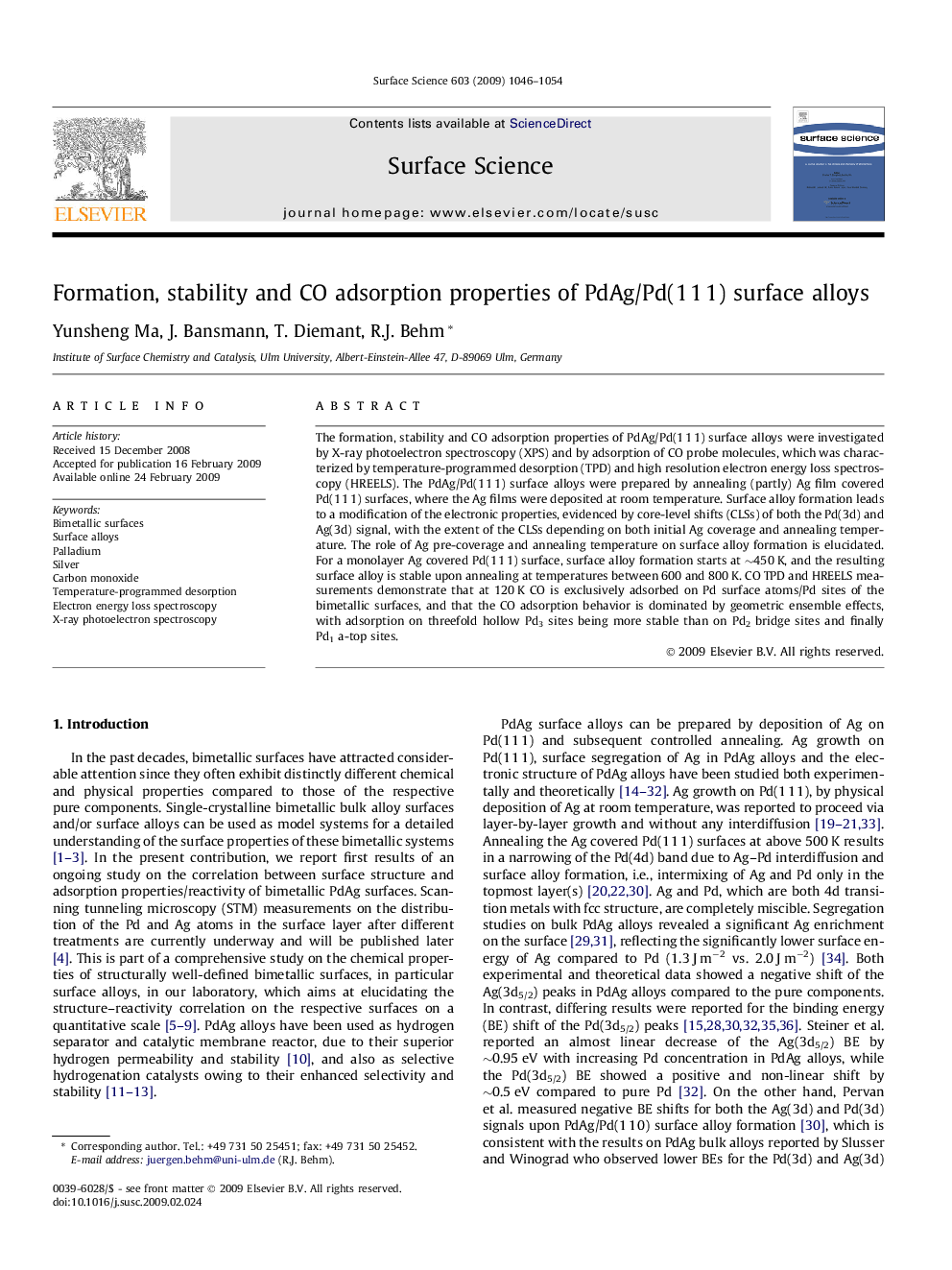| Article ID | Journal | Published Year | Pages | File Type |
|---|---|---|---|---|
| 5423929 | Surface Science | 2009 | 9 Pages |
Abstract
The formation, stability and CO adsorption properties of PdAg/Pd(1Â 1Â 1) surface alloys were investigated by X-ray photoelectron spectroscopy (XPS) and by adsorption of CO probe molecules, which was characterized by temperature-programmed desorption (TPD) and high resolution electron energy loss spectroscopy (HREELS). The PdAg/Pd(1Â 1Â 1) surface alloys were prepared by annealing (partly) Ag film covered Pd(1Â 1Â 1) surfaces, where the Ag films were deposited at room temperature. Surface alloy formation leads to a modification of the electronic properties, evidenced by core-level shifts (CLSs) of both the Pd(3d) and Ag(3d) signal, with the extent of the CLSs depending on both initial Ag coverage and annealing temperature. The role of Ag pre-coverage and annealing temperature on surface alloy formation is elucidated. For a monolayer Ag covered Pd(1Â 1Â 1) surface, surface alloy formation starts at â¼450Â K, and the resulting surface alloy is stable upon annealing at temperatures between 600 and 800Â K. CO TPD and HREELS measurements demonstrate that at 120Â K CO is exclusively adsorbed on Pd surface atoms/Pd sites of the bimetallic surfaces, and that the CO adsorption behavior is dominated by geometric ensemble effects, with adsorption on threefold hollow Pd3 sites being more stable than on Pd2 bridge sites and finally Pd1 a-top sites.
Keywords
Related Topics
Physical Sciences and Engineering
Chemistry
Physical and Theoretical Chemistry
Authors
Yunsheng Ma, J. Bansmann, T. Diemant, R.J. Behm,
